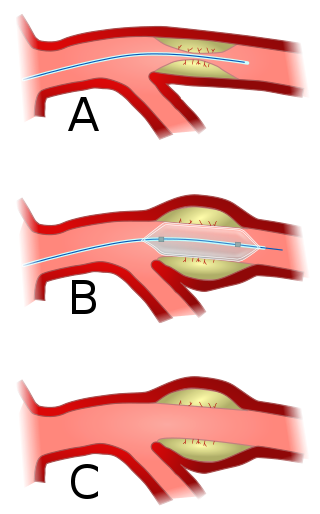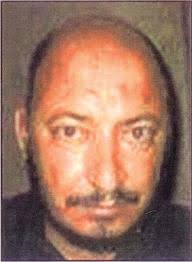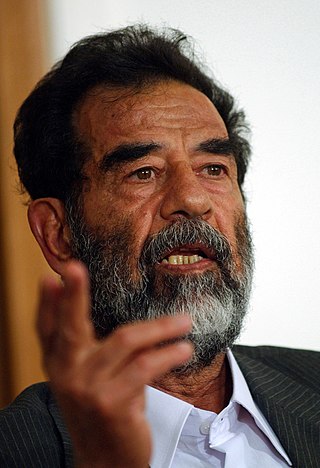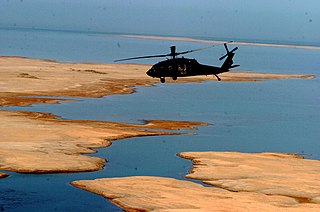Peptic ulcer disease is a break in the inner lining of the stomach, the first part of the small intestine, or sometimes the lower esophagus. An ulcer in the stomach is called a gastric ulcer, while one in the first part of the intestines is a duodenal ulcer. The most common symptoms of a duodenal ulcer are waking at night with upper abdominal pain, and upper abdominal pain that improves with eating. With a gastric ulcer, the pain may worsen with eating. The pain is often described as a burning or dull ache. Other symptoms include belching, vomiting, weight loss, or poor appetite. About a third of older people with peptic ulcers have no symptoms. Complications may include bleeding, perforation, and blockage of the stomach. Bleeding occurs in as many as 15% of cases.

Angioplasty, also known as balloon angioplasty and percutaneous transluminal angioplasty (PTA), is a minimally invasive endovascular procedure used to widen narrowed or obstructed arteries or veins, typically to treat arterial atherosclerosis. A deflated balloon attached to a catheter is passed over a guide-wire into the narrowed vessel and then inflated to a fixed size. The balloon forces expansion of the blood vessel and the surrounding muscular wall, allowing an improved blood flow. A stent may be inserted at the time of ballooning to ensure the vessel remains open, and the balloon is then deflated and withdrawn. Angioplasty has come to include all manner of vascular interventions that are typically performed percutaneously.

Tariq Aziz was an Iraqi politician who served as Deputy Prime Minister, Minister of Foreign Affairs and a close advisor of President Saddam Hussein. Their association began in the 1950s when both were activists for the then-banned Arab Socialist Ba'ath Party. He was both an Arab nationalist and a member of the Chaldean Catholic Church.

Interventional radiology (IR) is a medical specialty that performs various minimally-invasive procedures using medical imaging guidance, such as x-ray fluoroscopy, computed tomography, magnetic resonance imaging, or ultrasound. IR performs both diagnostic and therapeutic procedures through very small incisions or body orifices. Diagnostic IR procedures are those intended to help make a diagnosis or guide further medical treatment, and include image-guided biopsy of a tumor or injection of an imaging contrast agent into a hollow structure, such as a blood vessel or a duct. By contrast, therapeutic IR procedures provide direct treatment—they include catheter-based medicine delivery, medical device placement, and angioplasty of narrowed structures.

Sanjay Gupta is an American neurosurgeon, medical reporter, and writer. He serves as associate chief of the neurosurgery service at Grady Memorial Hospital in Atlanta, Georgia, associate professor of neurosurgery at the Emory University School of Medicine, member of the National Academy of Medicine and American Academy of Arts and Sciences and is the chief medical correspondent for CNN.

A chalazion or meibomian cyst is a cyst in the eyelid usually due to a blocked meibomian gland, typically in the middle of the eyelid, red, and not painful. They tend to come on gradually over a few weeks.
Margaret Hassan, also known as "Madam Margaret", was an Irish-born aid worker who had worked in Iraq for many years until she was abducted and murdered by unidentified kidnappers in Iraq in 2004, at the age of 59. Her remains have never been recovered.

Abu Omar al-Baghdadi, born Hamid Dawud Mohamed Khalil al-Zawi was the Emir of the Islamic militant umbrella organization Mujahideen Shura Council (MSC), and its successor, the Islamic State of Iraq (ISI), which fought against the forces of the U.S.-led Coalition forces during the Iraqi insurgency.

The execution of former Iraqi president Saddam Hussein took place on 30 December 2006. Saddam was sentenced to death by hanging, after being convicted of crimes against humanity by the Iraqi Special Tribunal for the Dujail massacre—the killing of 148 Iraqi Shi'ites in the town of Dujail—in 1982, in retaliation for an assassination attempt against him.

A tourniquet is a device that is used to apply pressure to a limb or extremity in order to stop the flow of blood. It may be used in emergencies, in surgery, or in post-operative rehabilitation.

Events in the year 2008 in Iraq.
Van Nuys Boulevard is a major north-south arterial road that runs through the central San Fernando Valley of Los Angeles County, California. The boulevard was notable for its cruising lifestyle that was prevalent in the 1960s and 1970s, which was depicted in the 1979 film Van Nuys Blvd.

The non-pneumatic anti-shock garment (NASG) is a low-technology first-aid device used to treat hypovolemic shock. Its efficacy for reducing maternal deaths due to obstetrical hemorrhage is being researched. Obstetrical hemorrhage is heavy bleeding of a woman during or shortly after a pregnancy. Current estimates suggest over 300,000 women die from obstetrical hemorrhage every year with 99% of cases occurring in developing countries; many of these deaths are preventable. Many women in resource-poor settings deliver far from health-care facilities. Once hemorrhage has been identified, many women die before reaching or receiving adequate treatment. The NASG can be used to keep women alive until they can get the treatment they need.
Embolectomy is the emergency interventional or surgical removal of emboli which are blocking blood circulation. It usually involves removal of thrombi, and is then referred to as thromboembolectomy or thrombectomy. Embolectomy is an emergency procedure often as the last resort because permanent occlusion of a significant blood flow to an organ leads to necrosis. Other involved therapeutic options are anticoagulation and thrombolysis.
The Children's Burn Foundation is an American non-profit organization founded in 1985 to meet the physical, psychological and financial needs of children who have been severely burned. Located in Sherman Oaks, California, it was founded by Dr. Paul Navarro and Daniel Navarro. One child supported by the Children's Burn Foundation is Youssif, a young Iraqi boy set on fire by masked men outside of his Baghdad home in 2007.

Henri Ronald Ford is a Haitian-American pediatric surgeon. He previously served as chief of surgery at Children's Hospital Los Angeles and Vice Dean for Medical Education at the Keck School of Medicine of the University of Southern California. In 2018, he was appointed dean of the University of Miami's Leonard M. Miller School of Medicine. Following the 2010 Haiti earthquake, Ford returned to Haiti to provide medical assistance to earthquake victims.
Jadon and Anias McDonald are a pair of formerly conjoined craniopagus twins. They were separated by Dr. James Goodrich and a team of forty doctors in a nearly 30 hour surgery on October 14, 2016 at Children's Hospital at Montefiore when they were thirteen months old.
James Tait Goodrich was an American neurosurgeon. He was the director of the Division of Pediatric Neurosurgery at Montefiore Health System and Professor of Clinical Neurological Surgery, Pediatrics, Plastic and Reconstructive Surgery at the Albert Einstein College of Medicine, and gained worldwide recognition for performing multiple successful separations of conjoined twins. He assisted in two craniopagus separations with Dr. Alferayan A in Riyadh, Saudi Arabia, with the first one done May 5, 2014 and the second one done February 14, 2016. Both pairs were successfully separated and are doing well.











